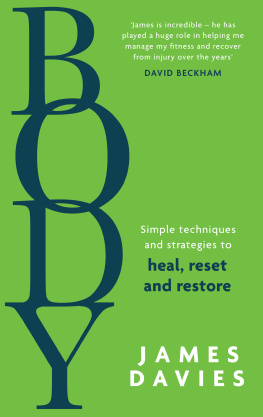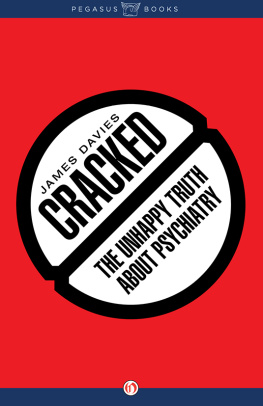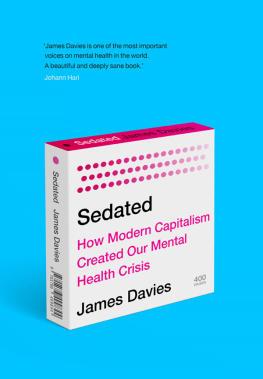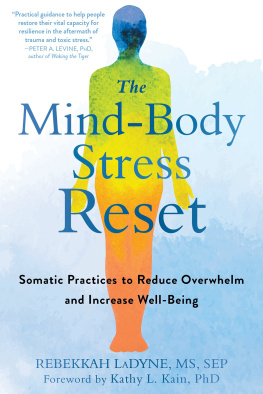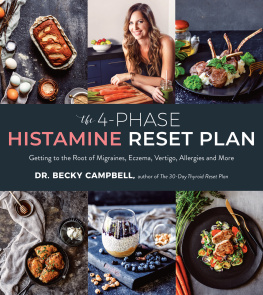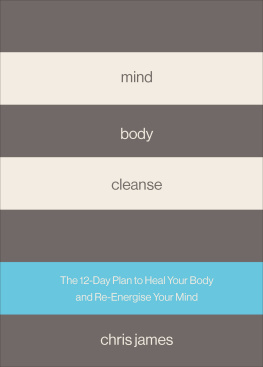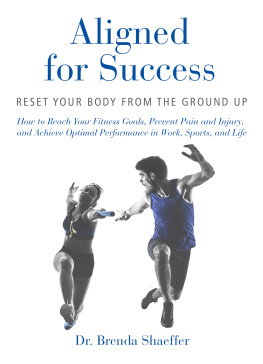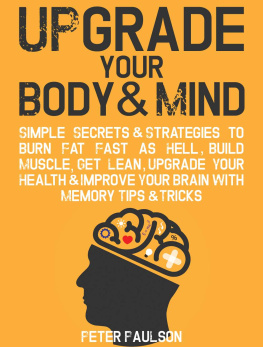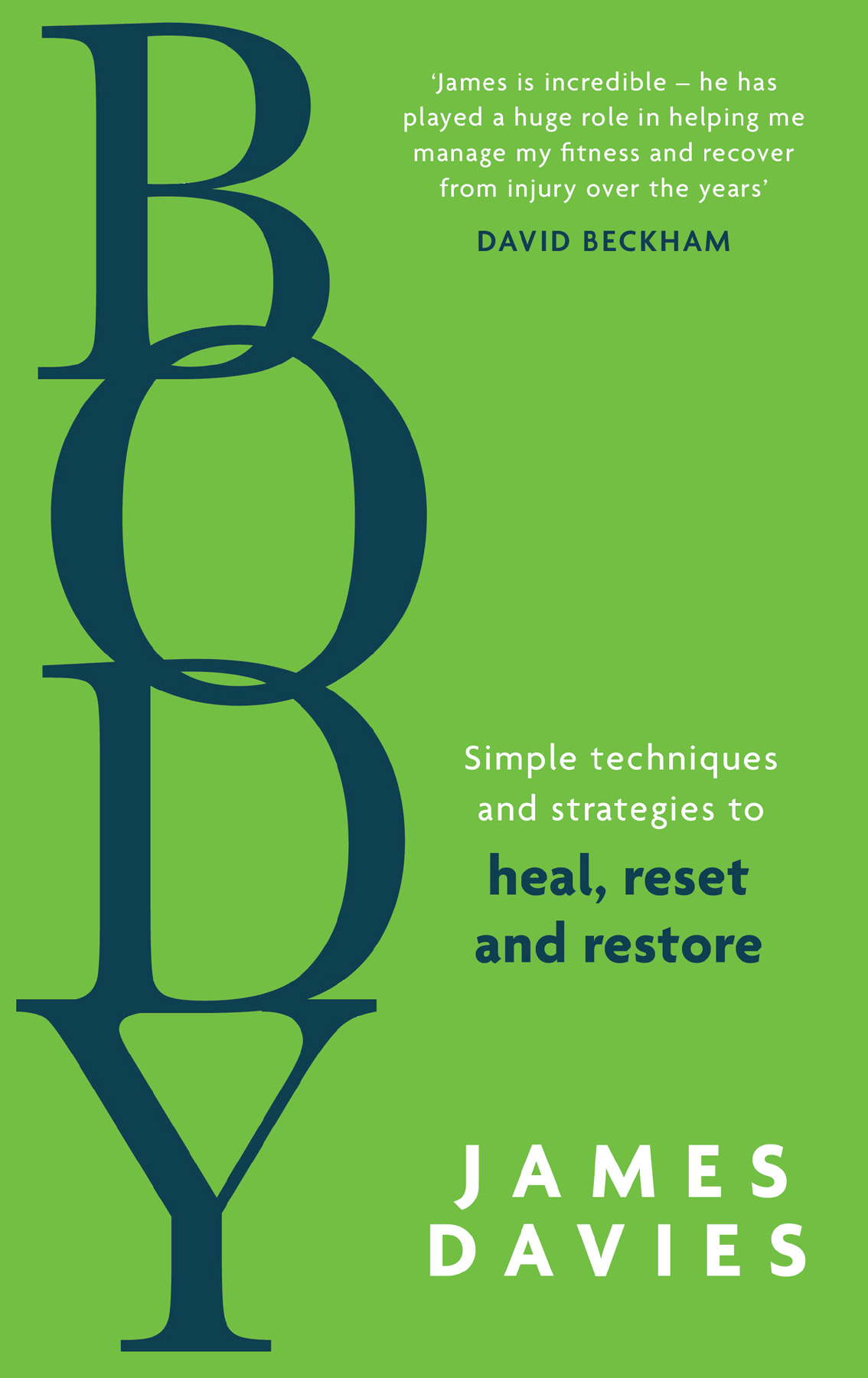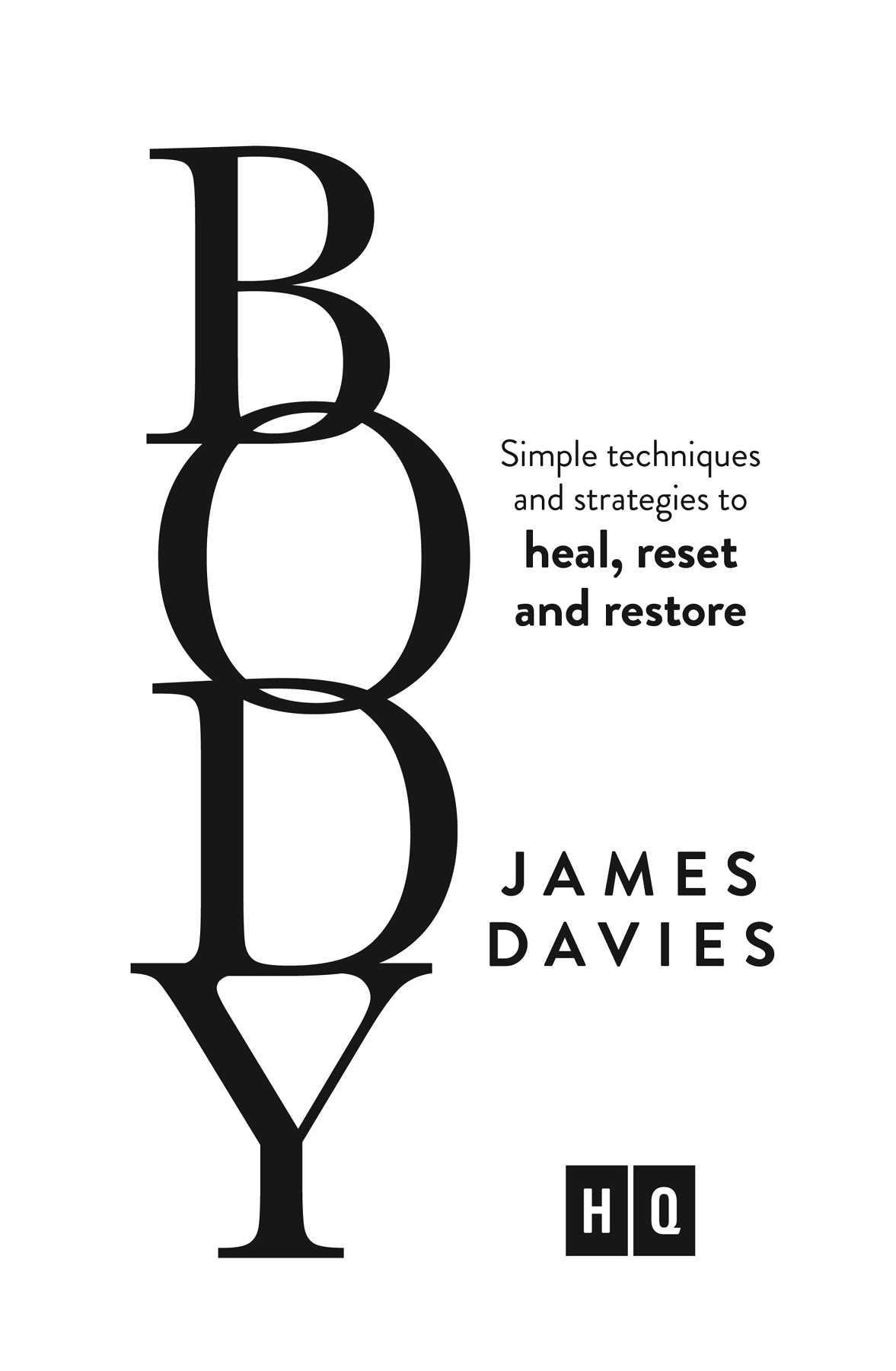Contents
Guide
To my mum, my brothers
the JET
team my wife, and my children
MEDICAL NOTE
This book contains advice and information relating to health care. It should be used to supplement rather than replace the advice of your doctor or another medical professional. If you know or suspect you have a health problem, it is recommended that you seek your physicians advice before embarking on any medical programme or treatment. All efforts have been made to ensure the accuracy of the information contained in this book as of the date of publication. This publisher and the author disclaim liability for any medical outcomes that may occur as a result of applying the methods suggested in this book. Additionally, some names and events have been changed to protect the privacy of the individuals involved. Occasionally, the author has shared treatment stories from his clients, whose consent has been sought for this purpose. Finally, some stories are hypothetical and appear purely for demonstration purposes.
Contents
W hen I was 12 years old, I had a plan. And it was a good one. I was going to represent Great Britain in the Olympics.
Now, before you dismiss me as some dreamer with his head in the clouds, at that time it was entirely possible. At 7 years old, Id won my first school sports day and knew I was the fastest in my class. From there, I quickly discovered that I was the fastest runner in my primary school; my friends and I would spend lunchtimes challenging everyone in the playground to see if they could beat me. No one could.
When I started secondary school, my PE teacher, Mr Raicevic, took me aside after football practice and told me I should start training properly, that I had real talent. He told me I was an all-rounder, but he thought I might have a future in running. To be singled out like that by my teacher propelled me forwards, made me think of the future and where I could be in a few years time. Linford Christie was my idol; my nose had been pressed up against the TV screen when he won gold in Barcelona in 1992. To me, he was an example of what a normal person like me could achieve with talent and hard work. I was going to be the next Linford.
Running was my joy, my first love, and my passion. I found a freedom in it I had never experienced in a classroom. Id struggled in school but not in the way that most people would imagine. It wasnt that I couldnt do the lessons or keep up with the work. It was more personal than that I had a stammer. It could appear at any time, that familiar choking sensation. Sometimes I couldnt get my words out for what felt like minutes, my heart sinking whenever I was asked to read out loud in my English classes. A page of text seemed to take a lifetime. I was never bullied, but some of my classmates did laugh. I tried not to be affected by it as I knew they werent doing it cruelly. Therefore, to be told I was skilled at something I loved made me even more determined to prove myself.
At that young age I thought talent could get me anywhere. I trained hard and didnt mess around outside school. I was going to make it, I was sure of it because I had talent, didnt I?
I was built for speed, excelled at short bursts in 100-metre and 200-metre races, but also enjoyed basketball, football, and even cross-country running. When I was around 13 years old, I started getting an ache in my lower back during the longer runs. I told myself it would be fine, couldnt conceive of there being anything wrong with the way I was training or treating my body. We did generic stretches at school, which I now know werent suitable or effective. I ran off the aches and pains, or took a couple of days away from training, ignoring the dull throb until it went away. I was 13 years old. I was invincible.
All of this worked until, at 16 years old, my plan was left in tatters.
It was a cold autumnal day, the sort where you can see your breath in the crisp air, and I had been jogging on the spot. I was trying to keep my body warm as I waited for my turn to impress the PE examiner for one of my A-level assessments. Outside school I also trained with a local running club, had been winning district prizes for track and field, but didnt have the right coach or training routine.
When it was my turn to be assessed, I slid my feet against the blocks. My fingertips were splayed on the ground, my back ever so slightly rounded, hips directly aligned with my front toe, a position that I had practised so many times it felt like second nature. The examiner blew the whistle for me to start, and I was off, arms pumping. I knew I was doing well, was running really fast.
Ten strides in and a cramping sensation hit my thigh, just above my knee. I had never felt anything like it before it was so strong that there was an accompanying electrical sensation. With the next step, I came crashing down and lay there for a moment, shock hardly registering as I was more concerned about being flat out on the ground in front of all my friends. When I pulled myself up and tried to run it off, I thought I was being sensible; it had worked in the past. My leg cramped again, and I knew that I would have to take a couple of days away from training. I limped over to the physiotherapist and he told me to apply heat, which I now know is the worst thing I could have done.
It all went downhill from there.
When a muscle is damaged and then poorly managed, the muscle tissue can sometimes calcify as if forming bone tissue. I eventually found out I had a condition called myositis ossificans, where this happens. No one realized this at the time. There was no attempt to diagnose what was wrong and instead, I went straight for treatment. First, I went to a massage therapist, who was aggressive in their treatment and made it worse. Then I saw a couple of physiotherapists who told me to exercise the muscle, and that damaged it as well. It sounds obvious, but if the correct diagnosis hasnt taken place, you might as well blindfold yourself and point randomly at a chart when deciding on a course of treatment. Some might help, some might hinder.
I WAS ONLY 16 YEARS OLD AND WAS CERTAIN I WOULD GET BETTER.
Eventually I had an MRI scan, which showed I had a muscle tear that had turned into calcified tissue. I had two options: a steroid injection, or an operation. After some consideration I went with surgery, which was the worst decision I have ever made. I lost a large part of the muscle and there wasnt the aftercare that I needed. Every time I tensed the muscle, I could see that part of it was missing.
But I still had hope. I was only 16 years old and was certain I would get better. My family and friends were always telling people I was going to be in the Olympics. James is going to make it. Youll see him on TV soon, better ask for his autograph now while you know him! I used to smile at the attention, joke along with them, hoping that I would prove them right.
Weeks turned into months and I began trying out for the Great Britain team, injured but still showing up every day. It was the first time I lost races. At 17 years old, no one was talking about my future any more.
When the Great Britain team started accepting into its ranks people I used to win races against, but not me, I reluctantly gave up on the dream that had carried me through my teenage years. I had learnt that talent can only get you so far. To really succeed you need the right training methods, coaches, and therapists supporting you.

